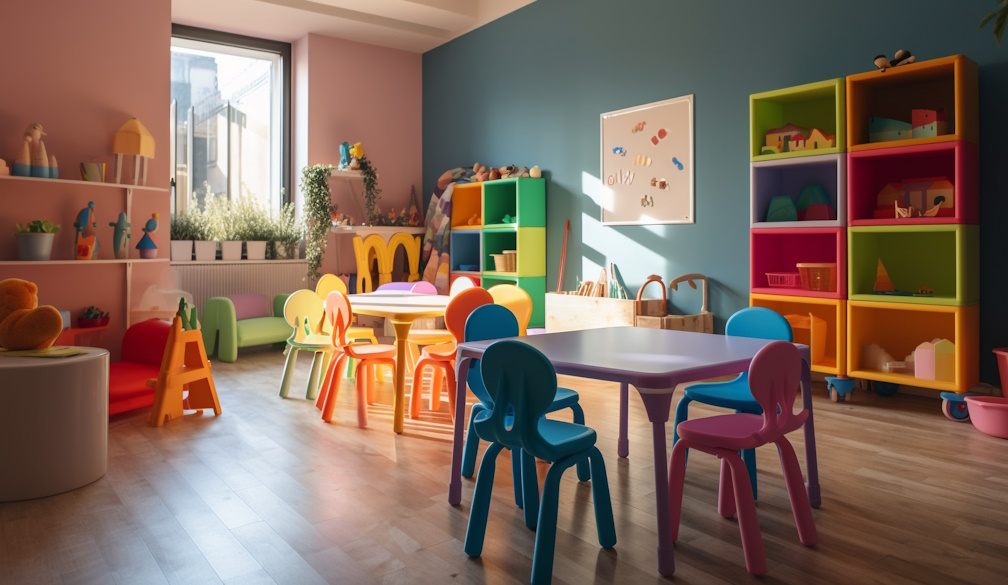What Do Professional Childcare Cleaning Services Involve?

Maintaining a clean, hygienic, and safe childcare environment is essential to the health and well-being of children, families, visitors, and staff. Young learners naturally play, explore, and interact closely with one another, but this constant contact increases the spread of germs, contaminants, and illnesses.
Whether you’re a parent, childcare centre manager, or nursery owner, you can feel confident knowing that regular sanitation and disinfection significantly reduce the risk of viruses and sickness. A proper cleaning routine offers everyone valuable peace of mind.
This blog outlines the role of professional childcare cleaning services and highlights the importance of meeting strict sanitation standards, empowering parents and childcare operators to maintain a safe, healthy, and collaborative learning environment.
Understanding the Difference Between Cleaning, Sanitising, and Sterilising
Knowing how these processes differ helps ensure each task delivers maximum benefit:
Cleaning: Cleaning removes dirt, dust, and debris using soap, detergent, and water. It doesn’t kill germs, but it dramatically reduces them and lowers the chance of illness. Skilled cleaners use warm, soapy water, vacuums, mops, and cloths to maintain a tidy, healthy nursery.
Sanitising: Sanitising reduces the number of germs on surfaces to meet public health standards. It doesn’t eliminate every microbe, but it reduces infection risks. Contractors typically use sprays, wipes, or non-toxic solutions designed for childcare environments.
Sterilising: Sterilising eliminates bacteria, fungi, viruses, and spores. It provides the highest level of protection and is essential for areas and items used by infants. Professional cleaners use methods such as boiling toys and bottles, food-safe sterilising solutions, and specialised equipment.
Quality childcare cleaners combine all three processes to ensure play areas, bathrooms, kitchens, and shared spaces remain hygienic and microbe-free.
What Do Daily Cleaning Schedules Look Like?
Childcare centres follow strict daily cleaning procedures to maintain safe common areas and high-touch surfaces. This includes wiping tables, sanitising toys, cleaning fixtures, mopping floors, and removing crumbs and debris. Skilled cleaners use non-toxic products to remove dirt, allergens, and contaminants, protecting the health of children, staff, and visitors.
Why Toy and Play Equipment Sanitisation Matters
Children frequently share toys and often put them in their mouths, making daily sanitisation critical. Cleaners machine-wash soft toys and sanitise hard toys like blocks, kitchen sets, and musical instruments. They typically use diluted bleach or non-toxic disinfectants, allowing them to sit before rinsing. Steam is often used for baby toys to reduce chemical exposure.
Why Feeding Equipment Must Be Sterilised
Infants are particularly vulnerable to bacterial infections, so bottles and feeding equipment are sterilised daily. Methods include:
- Boiling for heat-safe materials
- Steam sterilisation for speed and convenience
- Cold water sterilisation for heat-sensitive equipment like dummies, latex teats, and pump parts
The Importance of Weekly Deep Cleaning
Daily routines are supported with weekly end-to-end deep cleans, targeting all areas including sleeping rooms, restrooms, floors, windows, and skirting boards. This removes dust, allergens, and pathogens and ensures long-term cleanliness and reassurance for families and staff.
Prioritising Restrooms and Nappy Changing Areas
These areas carry the highest contamination risk. Gold Coast commercial cleaning companies sanitise changing tables after every use and clean restrooms daily, or more frequently in high-traffic centres. Meticulous attention to taps, handles, and flush mechanisms helps maintain a hygienic, trustworthy environment.
Why Air Quality and Ventilation Matter
Good ventilation reduces airborne contaminants and creates a healthier indoor space. Centres often open windows, use purifiers, and conduct air quality checks to manage humidity and dust. Regular cleaning of air systems helps protect children’s respiratory health.
Is Cleaning Staff Training Required?
Experienced childcare cleaning companies train their staff extensively in hygiene protocols, PPE use, and best-practice cleaning methods. Ongoing training ensures compliance with current Australian health and safety standards and equips cleaners to educate staff and children about basic hygiene practices, such as effective handwashing.
Conclusion
Regular cleaning, sanitising, and sterilising are essential for protecting the long-term health of children, families, and staff. These practices minimise germs, allergens, and contaminants, creating a safe and welcoming learning environment.













